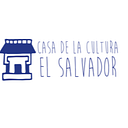Award-Winning Washingtonian Artist Nicolas F. Shi Shares his Journey and Inspiration
To look into Nicolas Shi’s portraits is to dive into a colorful wonderland you can’t escape from. His work blends geometric, three-dimensional elements, with his Latin American upbringing and Chinese heritage. Shi’s unique style inspired by French impressionists and Andy Warhol’s modernity mesmerizes the human eye.
Shi arrived in the United States in 1980, leaving behind his native El Salvador. His identity, as his multi-color palette, is diverse. He describes himself as “Salvadoran born Chinese American and proud of every single part of it.” In the United States, he attended college and received a Master’s degree in Architectural Engineering from Oklahoma State University in 1986. He worked in architecture and engineering for ten years before dedicating himself to painting.
The Washington, D.C.-based artist has exhibited his work worldwide and has won various awards among them: the Medal of Honor in Fine Arts by the Ministry of Foreign Affairs of El Salvador in 2000 and Best Local Artist by Washington Blade in 2001 and 2003.
Shi’s art explores social issues, such as immigration and discrimination. He experiments with human-made objects such as textiles, architectural details, newspaper clippings, and photography. His medium goes beyond a blank canvas and portraiture. Shi has been involved with public art projects: painting sculptures, murals, and even transportation vehicles. Shi’s interwoven identities are constantly reflected in each of his brushstrokes.
Currently, Shi is working on a couple of commissioned paintings. When he is not working on his art, he volunteers, other days he travels or walks around looking for inspiration. You can learn more about the artist in the interview below conducted for the “Salvi Artists in The U.S.” series. You can also check out more of his work on Instagram: @shi.nicolas or on his website: www.nfshi.com.
“’Querer es poder’… don’t give up.” — Nicolas F. Shi.

Tell us about yourself. Where did you grow up? Where did you go to school?
I was born in San Salvador, El Salvador, from Chinese parents. My father came from Canton, China, in the 1920s, and my mother was a first-generation Salvadoran born Chinese. At the beginning of the Salvadoran Civil War, after graduating from high school at Liceo Salvadoreño, I came to the United States to attend college. I received a degree in Architectural Studies and a Masters in Architectural Engineering from Oklahoma State University.
Where are you currently located? How has your city/state impacted your artistic development?
After graduating from college in 1985, I worked in Oklahoma City for a year and then moved to Washington, D.C., where I found work as an architectural engineer. After a few years, my work became more engineering than design. Looking for another creative outlet, I started working with graphic design and painting, eventually quitting my job to dedicate myself fulltime to art. I have lived in Washington, DC since 1986 and in 1988 bought a house — where I have my studio — in the Dupont Circle / Logan Circle area, which has been designated the arts district of D.C.
Do you remember when you discovered and/or accepted that you wanted to be an artist? What was your inspiration?
I have always been attracted to colors and design. From an early age, I had been interested in photography. I know it will sound like a cliché, but my inspiration is life in itself… any image that moves me from a child’s smile to a Gothic church. I paint what I see and like.
What have been the phases of your artistic development? Who were your mentors and/or idols?
Since I decided to become an artist, I have been trying to find my own style… something for what I could be recognized. Even though my work has been primarily portraits, lately, I am using portraiture as a means to explore social issues, such as immigration and discrimination. I admire many artists (and have been my inspiration), Monet, Calder, Picasso, and American portraitist Chuck Close.

What is your favorite artistic achievement?
There are a few achievements that I would consider important in my artistic career. Among them: being part of the exhibition Arte de America at the Centro Cultural Casa de la Moneda, Santiago Chile, being part of the permanent collections of the Smithsonian Institution and the Inter-American Development Bank Collection, both in Washington, D.C. But the one that I would personally consider most important is having a solo show at MARTE (Museo de Arte de El Salvador) because being of Chinese ancestry; it finally makes me feel accepted as Salvadoran. In this exhibition, I chronicled my parents’ journey from China to El Salvador, passing through Angel Island in the San Francisco Bay, the challenges they encountered settling, and my own migration to the United States.
What is your relationship with El Salvador now?
I still have relatives in El Salvador, and I try to visit as frequently as I can. I have shown my work at different venues over the years, most notably at the Ministry of Foreign Affairs, Museo David J. Guzman, and recently at MARTE. I hope to inspire young Salvadorans and Salvadoran Americans to pursue their artistic calling with determination and hard work. “Sí se puede.”
